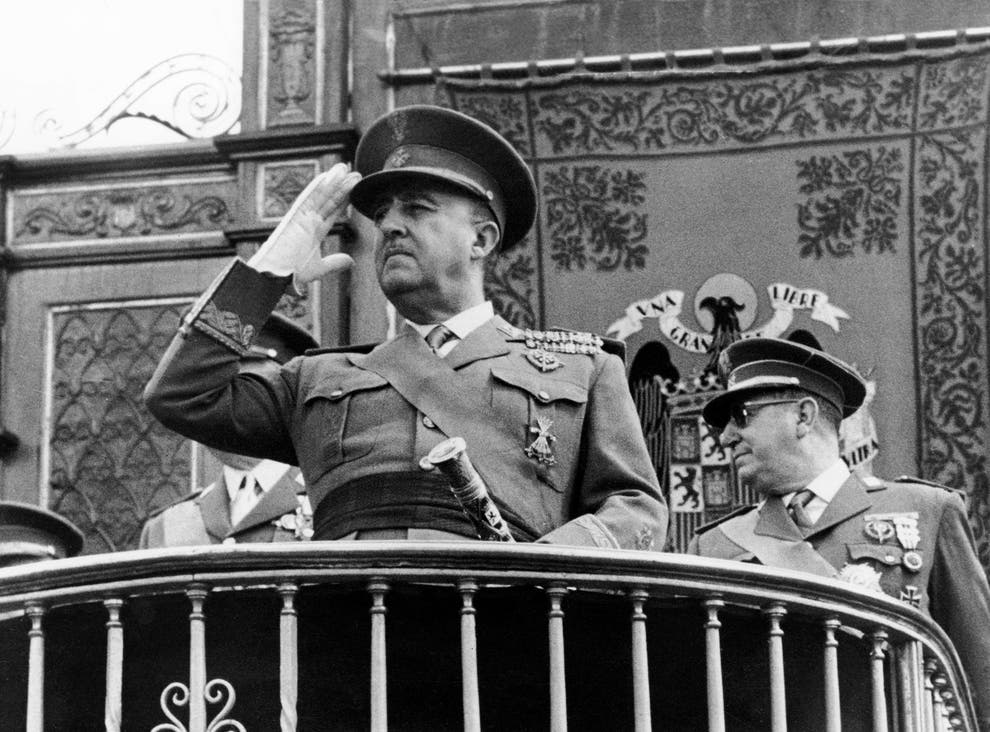More than 85 years on, divided Spain to get a national civil war museum
Work to begin on the museum next year in the town of Teruel

Unlike the UK and other European countries which have opened grandiose museums to remember the wars that tore their nations apart, Spain has so far failed to agree on how to address the painful memory of its own civil war – until now.
In 2022, work will begin on what historians say will be the country’s first national museum about the 1936-1939 conflict, which became a precursor to the Second World War.
Small museums are dotted around Spain dedicated to individual battles in the civil war or how exiles fled the country.
But until now bitter political disputes have hampered attempts to open a national centre to tell the story of how Spain descended into a fratricidal conflict.
These rows are very much alive today as was evidenced when Spain’s left-wing minority government introduced a new democratic memory law in the country’s parliament in October, which it claims will help the country to heal the wounds of the past.
Among dozens of measures contained in the law, it will turn the site of General Francisco Franco’s former mausoleum into a civil cemetery and ban organisations that glorify the late dictator.
Pablo Casado, the leader of the conservative People’s Party (PP) which was the descendant of a political alliance founded by former Francoist ministers, has vowed to repeal the law, saying it will only “dig up grudges”.
Santiago Abascal, the leader of the far-right Vox party, said in a parliamentary debate last year that the present government was “the worst for the past 80 years”, implying Franco’s dictatorship was better.
Against this background, the €6m (£5m) museum is planned in the unlikely surrounds of Teruel, a town with a population of only 35,000 in the eastern region of Aragon, way off the tourist trail.
However, it has been chosen because of its links to one of the key battles of the war between 1937-38 fought during a fierce winter when temperatures plunged to -20C. The combined death toll was 140,000 men.
Though Franco’s nationalist forces eventually emerged victorious, it was the republican army which initially gained the upper hand, taking over Teruel until they were repulsed by superior forces.
Ernest Hemingway covered the battle alongside New York Times war correspondent Herbert L Matthews and Kim Philby, the London Times journalist later revealed to be a Soviet spy.
Javier Paniagua, a professor of politics and social thought and a former Spanish Socialist Workers’ Party MP, will lead a commission to decide how to tell the story of the civil war.
“The idea is that it will be a national museum of the civil war which gives both sides of the story from the perspective of the nationalists and the republicans,” he told The Independent. “We want it to become a European reference point for the Spanish civil war.”
Visitors will see contemporary testimonies from those who fought in the conflict plus the accounts of civilians who lived through the trauma.
Photographs taken by the likes of Robert Capa as well as uniforms of the soldiers from both sides and replicas of the warplanes will also be put on display.
He has contacted experts including British historian Sir Paul Preston and American historian Stanley G Payne to ask if they would like to contribute to the narrative.
Joan Santacana, a historian, said the museum would be for future generations to understand how Spain descended into civil war.
“The civil war has always been controversial. What we are trying to do is create a museum so that in the future people can understand what happened. There will always be people who do not accept a version of the civil war. This will not be a museum for the PP or Vox. We want to ask how did this happen, why did it happen this way,” he said.
The museum is likely to open its doors in 2025.
Professor Paniagua noted that though Spain had failed until now to open a national museum to the war more than 80 years after the conflict started, other countries had also struggled to address their past wars. “Until President Obama came to the White House, there was no American civil war museum in the US in 2013,” he said.
Until the museum in Teruel is open, one person who can give people an idea of the international context of the Spanish civil war is a British historian who runs a mobile museum out of a battered suitcase in Barcelona.
Nick Lloyd, who has lived in Spain for more than 30 years, and his business partner Catherine Howley, conduct historical tours about the conflict and among the treasures contained in the mobile museum is a book signed by the man who saved George Orwell’s life.
The Homage to Catalonia author was shot through the neck by a sniper while fighting for the republican forces in 1937. Harry Milton, an American volunteer, stemmed the bleeding in time to save his life.
Were it not for his swift action, the world may never have had the pleasure of reading Animal Farm or 1984.
Other gems in the collection include an original order of service for a BBC concert organised by the Archbishop of York for republican refugees in 1938 which illustrates how some pockets of British society tried to help the republican side while the British government refused to intervene.
The reality of war comes home in the form of a mangled lighter and the bullet which smashed it apart. A medical kit contains a toy ambulance to amuse child victims at the front.
Subscribe to Independent Premium to bookmark this article
Want to bookmark your favourite articles and stories to read or reference later? Start your Independent Premium subscription today.

Join our commenting forum
Join thought-provoking conversations, follow other Independent readers and see their replies